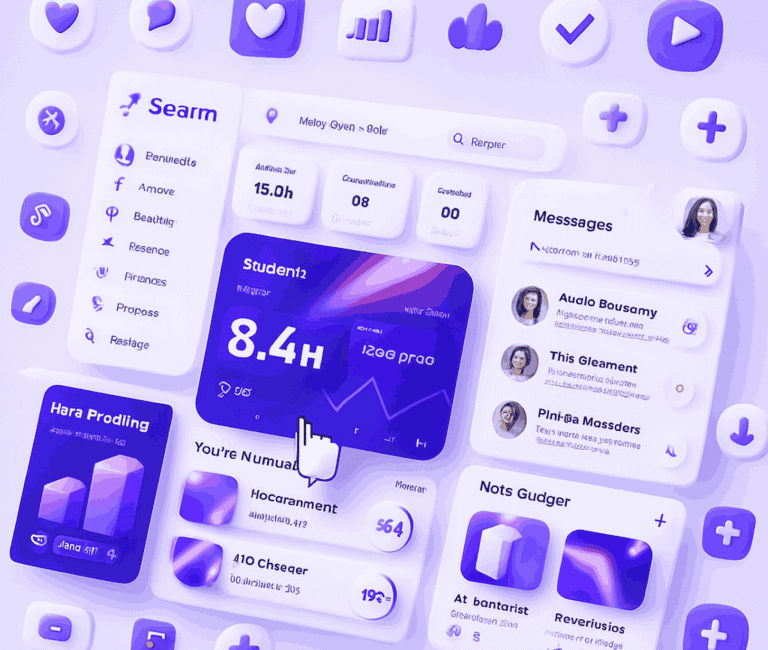
Imagine stepping into a store where the layout is confusing, the checkout takes forever, and nothing’s where it should be. You’d likely walk out, right?
Now think about your mobile app. If users feel lost, face delays, or can’t easily complete tasks, they’re not going to stick around — let alone make a purchase.
This is where a UX audit becomes essential. Think of it as a complete health check for your app, uncovering friction points and identifying ways to enhance the user journey. With actionable insights, you move beyond guesswork and make informed improvements that actually drive engagement — and more importantly, sales.
The Evolution of Mobile Apps: Engagement Tools Turned Conversion Machines
Mobile apps have come a long way. Once designed primarily for building brand loyalty and keeping users engaged, their role has now expanded. With shifting market demands and changing user behavior, mobile apps have evolved into powerful sales platforms.
For brands looking to stay ahead, understanding this shift is vital. Apps aren’t just about engagement anymore — they’re now direct channels for revenue. That means focusing more on solving user pain points, improving functionality, and optimizing for conversions.
Then: Mobile Apps for Engagement and Storytelling
In the early days, mobile apps were storytelling platforms — designed to share a brand’s identity and build relationships with users. Brands leaned into content-driven strategies to foster loyalty and create community. It was all about designing engaging experiences and understanding different user groups through detailed personas.
Techniques like user-generated content, interactive features, and tailored narratives were commonly used. These helped users feel more connected while allowing brands to understand preferences, habits, and expectations — ultimately boosting engagement.
Now: Mobile Apps Built for Seamless Sales
Today’s mobile apps are built with a sharp focus on conversions. They’re streamlined to reduce friction, facilitate transactions, and offer seamless user experiences. A cluttered interface or a long checkout process can easily kill a sale, so modern apps prioritize clarity, simplicity, and speed.
Features like in-app payments, intuitive layouts, and minimal clicks to purchase are now essential. The goal? Eliminate anything that might interrupt the buying process and get users from interest to checkout as quickly as possible.
Why the Market Demands This Change
The shift isn’t just a trend — it’s a response to real market forces. In today’s competitive e-commerce space, mobile-first design isn’t optional. With over 70% of shopping traffic coming from mobile devices, users expect quick, smooth, and intuitive experiences.
Modern shoppers don’t want to be wowed only by engaging content — they want apps that help them buy easily. That’s why businesses need to rethink success metrics. Instead of just measuring engagement, they must focus on boosting conversion rates and streamlining the entire mobile journey.
UX Audits: Your Secret Weapon for Conversion Growth
A UX audit is one of the most effective ways to uncover why users might not be converting. By analyzing the user experience through both data and expert review, you can spot where users drop off or encounter friction.
Tools like heuristic evaluation and behavior analytics give you cost-effective insights without requiring massive usability testing. Regular audits ensure you’re always iterating on your app — not just maintaining it, but continually improving the user journey and increasing conversions.

What to Look for in a UX Audit
When auditing your mobile app, some key areas should be prioritized:
- Navigation simplicity: Can users get where they need to in three taps or fewer?
- Checkout process: Are there unnecessary steps causing drop-offs?
- Usability flaws: Is the interface intuitive and easy to interact with?
- Call-to-actions (CTAs): Are they visible, clear, and well-placed?
- Page load speed: Does slow performance lead to higher bounce rates?
Each of these elements contributes to the overall success of your app — and directly impacts conversions.
UX Research & Testing Methods That Drive Sales
Improving UX isn’t guesswork — it requires methodical research. Tools like heatmaps, session recordings, and A/B testing reveal where users get stuck. Combined with lightweight UX experiments and usability tests, these strategies give you both qualitative and quantitative feedback.
Heuristic reviews and cognitive walkthroughs also help uncover issues without full user testing. This multi-layered approach ensures your app is always optimized for real-world behavior, not assumptions.
Streamlining the User Journey: From Entry to Checkout
Every second counts when it comes to keeping users engaged and guiding them toward purchase. Optimizing the user path — from the moment they land in the app to completing a transaction — can lead to massive improvements in sales.
Faster Navigation = Faster Decisions
Simplify the interface for thumb-friendly use, with well-organized categories and clear labeling. This helps users find what they want faster and makes browsing effortless.
Adding robust search functionality further reduces time-to-find, making the shopping journey efficient and stress-free.
Smoother Checkout = Higher Conversions
Frustration at checkout kills conversions. Streamlining this process — through guest checkout options, auto-filled payment details, and visible progress indicators — minimizes drop-offs.
Offering multiple payment methods and saving user preferences makes transactions faster and more convenient, which translates to higher sales.
Personalization = Bigger Basket Sizes
The more relevant the experience, the more users spend. By leveraging behavioral data to show personalized product recommendations and targeted offers, apps can significantly increase average order value.
User personas help segment audiences and deliver customized experiences that build trust and loyalty — turning casual shoppers into regular buyers.
Performance = Retention
Speed matters. Apps that load in under three seconds retain users better and see lower bounce rates. Reduce unnecessary animations, optimize backend performance, and track load times regularly to ensure a smooth, responsive experience.
Accessibility = Inclusivity (and Broader Reach)
Designing for all users is not just ethical — it’s smart business. Features like high-contrast visuals, larger touch targets, and adherence to WCAG accessibility standards create a better experience for everyone.
And in today’s competitive market, inclusive design can be a serious differentiator.
How Top Brands Are Driving Sales with UX Optimization
Smart brands constantly improve their mobile apps, aligning UX with evolving business goals.
- Zara & H&M redesigned their apps to prioritize speed and usability. Fast tap-to-buy features and simplified layouts helped address user feedback and improve the shopping experience.
- Sephora uses AI-powered personalization to increase average order values. By tailoring product suggestions and offering exclusive deals, they keep users engaged — and buying.
- Amazon sets the gold standard. With 1-click checkouts, dynamic pricing, and a frictionless return process, they’ve built an experience that converts efficiently and keeps users coming back.
What’s Next for Mobile UX?
The future of mobile UX is immersive and intelligent. We’re heading into a world of AI-powered assistants, voice commerce, and AR-enhanced shopping experiences. These innovations will redefine how users interact with mobile apps.
To stay ahead, brands must continue investing in UX audits, usability testing, and data-driven design updates.
The UX Priorities That Will Shape the Future:
- Smarter, thumb-friendly navigation
- Frictionless, fast checkouts
- Hyper-personalized experiences
- Accessible design for all users
Brands that prioritize these areas won’t just keep up — they’ll lead.


